I occasionally share tidbits of my writing process with my Patreon crew, but today’s share felt like a blog post. So here we are! I’m going to show a little window into my blogging process.
Many of my posts here are casual and off-the-cuff. Not so with my ADHD Homestead blog. Every ADHD Homestead post goes through some version of my full writing process, which usually looks like this:
- Outline (for new non-fiction drafts; I generally don’t outline fiction before I start)
- First draft (computer)
- Pen-and-paper revision
- Integrate pen-and-paper revisions into draft document (bonus edits often happen as I do this)
- Pen-and-paper revision while reading aloud
- Repeat Steps 3-5 as many times as necessary
Beware digging up old writing
Funny story about this post: I didn’t mean to write it. These days, I plan to write and publish one new ADHD Homestead post per month. I release a new episode of my Audioblogs podcast every two weeks. This means — in theory, at least — half my Audioblogs are recordings of old posts I’ve pulled from the archives.
The problem with pulling old posts from the archives to record audio narrations is, most writers don’t like our old writing. We read our past work with new eyes and can’t help but see all the ways we could improve it. (This requires us to cultivate some healthy detachment with published work.)
When I record narrations on archive posts, I often do some light polishing. The narrations help me catch flow issues, and my conversational tone sometimes uncovers weird tangents and extraneous details that made sense at the time but now feel out of place.
I copied and pasted a post about morning routines into this week’s Audioblog document expecting to do that level of polishing. I ended up scrapping the whole thing — including the topic.
Phase One: first draft, first read
I totally rewrote the opening to talk not about morning routines, but about the root issue: leaving one place and arriving at another, on someone else’s timeline. I mentioned the morning routine thing, but only as a sidebar (and a shining example of where people with ADHD tend to struggle). A new example — getting to a covid-19 vaccine appointment — made post feel more relevant to our current moment.
This first draft weighed in at 220 words.
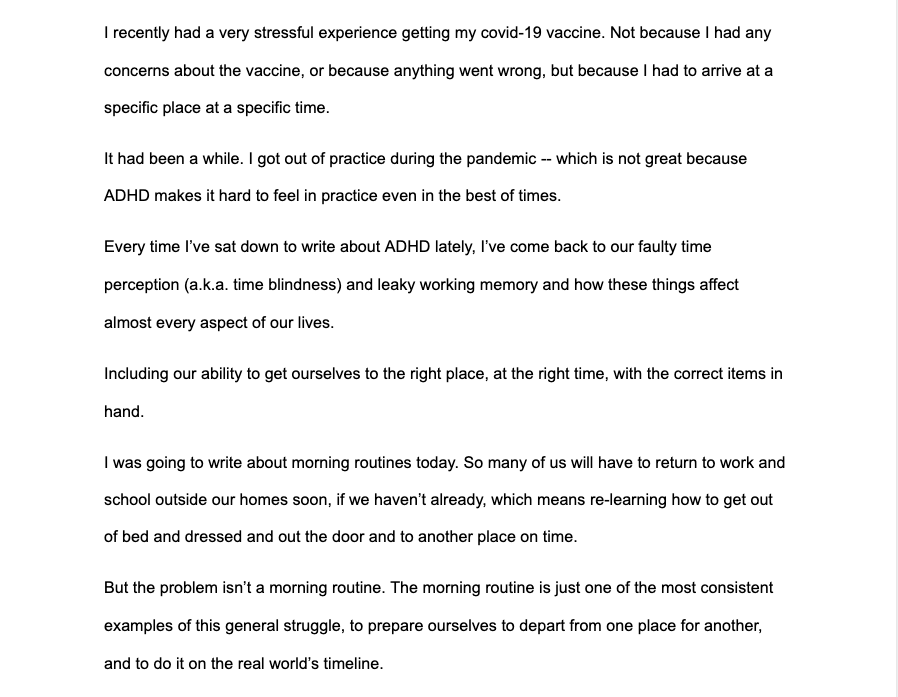
Predictably, I did most of my heavy editing after this first draft. It was my first time reading this prose. As I read it aloud, I stumbled a lot. I became impatient with myself. There were a lot of redundancies. I took too long to get to the point.
Whole paragraphs got crossed out and rewritten (or not).
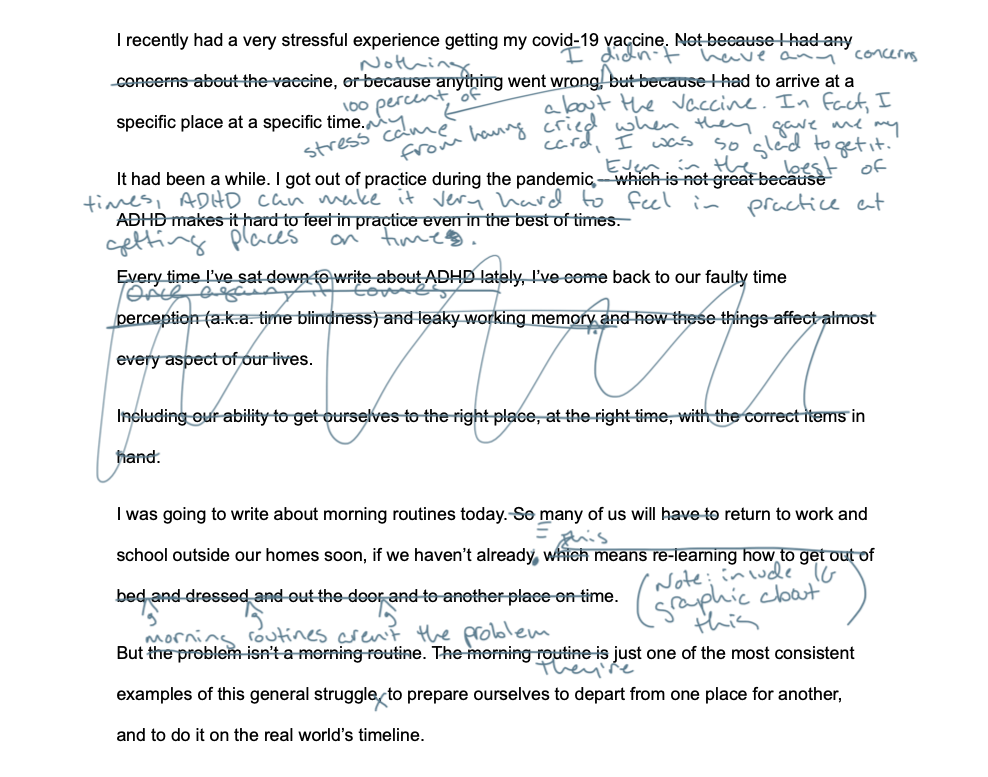
Later rounds of revisions: finding the flow
After I worked those notes into my document, I went at it with the pen again. This time the structure remained pretty much the same. I moved on to the sentence level.
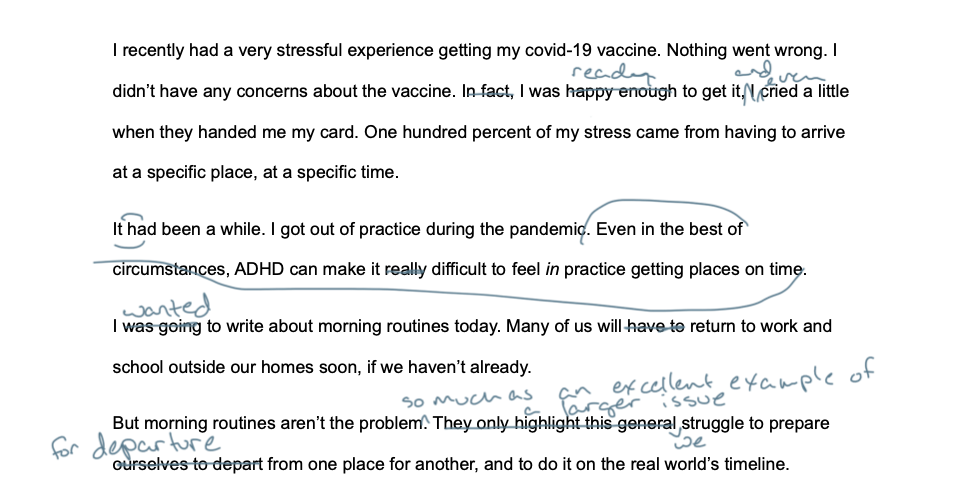
Sometimes I’ll stop here and do any additional edits on the computer only, especially if I’m short on time. However, I had the luxury of taking a third pass on this one. I eliminated a few unnecessary words here, an entire sentence there. The sentence didn’t flow right, and it wasn’t adding enough to the piece for me to spend time making it work. Out it went. I also pared down the last paragraph, condensing two sentences into one and eliminating extra fluff.
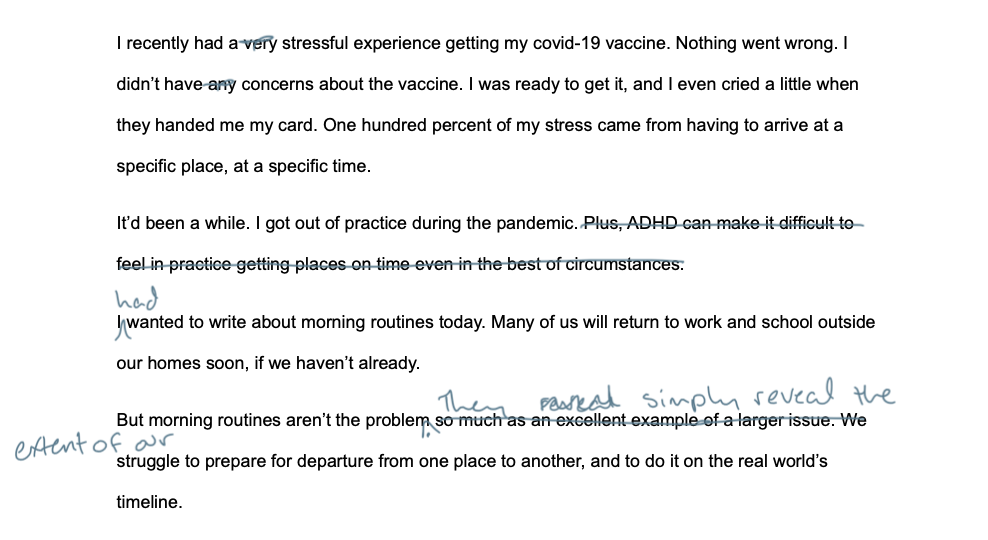
The final product
After that I had to call it done. I was publishing the post and recording the audio the next day.
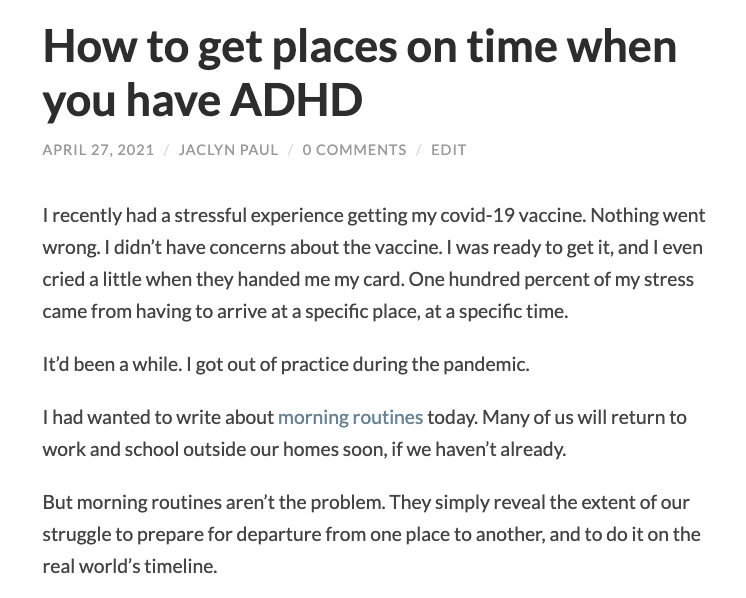
This final version is just 127 words: fifty-eight percent of its original length! Most of the time, I won’t even begin to consider something finished until it’s lost at least ten percent of its word count in edits.
Successful draft writing requires us to turn off our internal editor. I try not to think at all about structure or flow when I write. The best writing days happen when I’m not really thinking consciously at all: my thoughts just happen on the page, in real time.
However, this in-the-zone draft writing doesn’t usually result in something others will enjoy reading. It’s like the first rough cut on a woodworking project. To most casual observers, it doesn’t look like much. But with enough time and attention to detail, you can craft something everyone will appreciate. This little bit of magic is why I love the revision process!
Leave a Reply